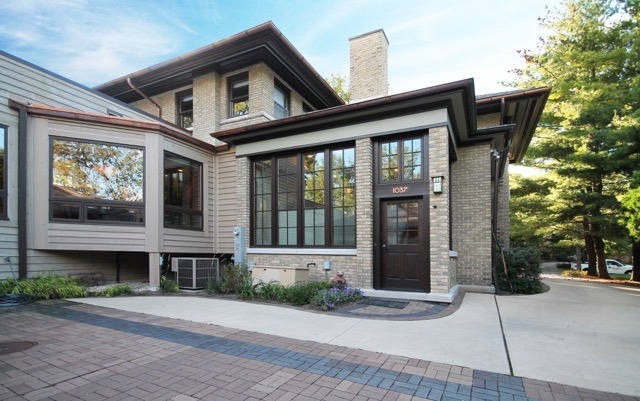 Did you know that there are two types of windows: new construction windows and replacement windows?
Did you know that there are two types of windows: new construction windows and replacement windows?
Replacement windows, unlike their new construction counterparts, are build to fit into an existing window frame and do not require a new nailing fin. This means that replacement window installation is generally easier and faster than new construction window installation. However, sometimes it is still necessary to do full frame replacement and use new construction windows. Having a skilled contractor and installer (like Wright Services) will ensure you’re always doing what’s best for your home’s unique home improvement situation.
If you’re thinking about replacing windows in your home or business, there are a lot of types of replacement windows and features to consider! Whether you’re getting one or all the windows in your building replaced, there are three main factors to any replacement window: style, material, and energy efficiency.
Window Styles
There are many different styles of replacement windows, each serving a different purpose. In this section, we’ll go through the features and advantages to each of the six main types of windows.
Double-Hung Windows
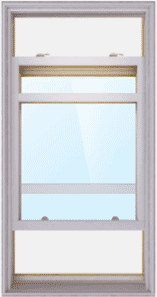 Double-hung windows are favorites among window replacements – and for good reason! These classic windows have two sashes (the framed glass panels of a window) that are both operational. This means that you can open the window by pushing the top sash down and by pulling the bottom sash up! Some double-hung window sashes tilt inward, allowing you to clean both sides of the window pane without going outside.
Double-hung windows are favorites among window replacements – and for good reason! These classic windows have two sashes (the framed glass panels of a window) that are both operational. This means that you can open the window by pushing the top sash down and by pulling the bottom sash up! Some double-hung window sashes tilt inward, allowing you to clean both sides of the window pane without going outside.
Single-Hung Windows
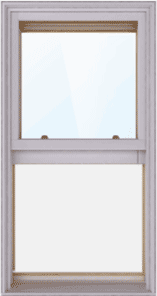 These windows are similar in appearance and function to double-hung windows with many featuring the inward tilting ability, but only the lower sash of this style of window can be opened.
These windows are similar in appearance and function to double-hung windows with many featuring the inward tilting ability, but only the lower sash of this style of window can be opened.
Casement Windows
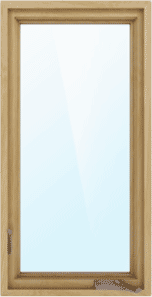 These windows, unlike the single- or double-hung styles, are set with hinges that allow them to open inward or outward depending on hinge placement.
These windows, unlike the single- or double-hung styles, are set with hinges that allow them to open inward or outward depending on hinge placement.
The most common style of casement window is the classically-romantic double sash window hinged at the sides and operational by opening up each side out like you would a double door. Awning windows are similar but open from the bottom.
Sliding Windows
 This is perhaps one of the most common styles of windows. Sliding windows are set along upper and lower tracks which allow one side of the window to easily slide open and provide great air flow.
This is perhaps one of the most common styles of windows. Sliding windows are set along upper and lower tracks which allow one side of the window to easily slide open and provide great air flow.
Bay & Bow Windows
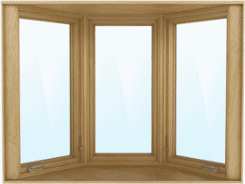 Bay and bow windows are really just sets of three or more connected windows that create a more or less angled curve that angles outward from your home’s wall.
Bay and bow windows are really just sets of three or more connected windows that create a more or less angled curve that angles outward from your home’s wall.
Bay windows are a set of three angled windows with a fixed, immovable window in the middle and smaller movable windows on either side. The side window sashes can frequently be opened by single-hung, casement, or sliding mechanisms. Bow windows are usually sets of four or more windows that create a smoother, wider curve than bay windows. Because each bow window in a set is usually uniform in size and shape with the rest, you also have more varied venting options!
Specialty (Accent) Windows
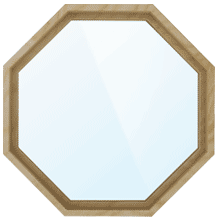 Specialty, or accent, windows are usually fixed windows with a mainly decorative purpose. They allow natural light to come through but frequently are not openable.
Specialty, or accent, windows are usually fixed windows with a mainly decorative purpose. They allow natural light to come through but frequently are not openable.
Because there is no ventilation mechanism, these accent windows are able to provide much more complex visual details such as decorative panes and unusual geometric designs and shapes. They made wonderful statement pieces that had character to any room!
Window Materials
There are three main materials used to make replacement window frames. Deciding which material would work best in your home or business depends on your needs!
Wood Windows
Wood is highly-sought after for its beautiful appearance and is very popular especially for interior framing. This material is a great choice for a replacement window.
Wood frames also hold many advantages over fiberglass and vinyl. They do not conduct heat and cold well, meaning that you’ll be better insulated against the fluctuating outside temperatures. Wood frame windows also prevent condensation from forming. This decreases the chance of mold or rot. They require a bit more work on your part because they sometimes come unfinished, but many are pre-primed which allows you to choose a paint that complements your home best.
Fiberglass Windows
Stronger than vinyl, fiberglass frames offer a clean, low-maintenance window that will protect your window from condensation and outside temperature almost as well as wood. Fiberglass replacement windows require a long-lasting professionally-applied coating of resin to protect it from UV rays, which may turn the fiberglass chalky after long exposure. As long as you have enough resin, these frames too should last you a long time!
Vinyl Windows
Perhaps the most common material for replacement windows, vinyl windows have dependable frame material that creates sturdy windowsable to resist heat and condensation. They are ready to install straight from the factory and do not need finishing or painting. Vinyl replacement windows also don’t fade with time making them low maintenance and long lasting!
Energy-Efficient Windows
Choosing replacement windows with better energy efficiency features will not only help you reduce your carbon footprint but also save you money on your energy bills.
Window Panes
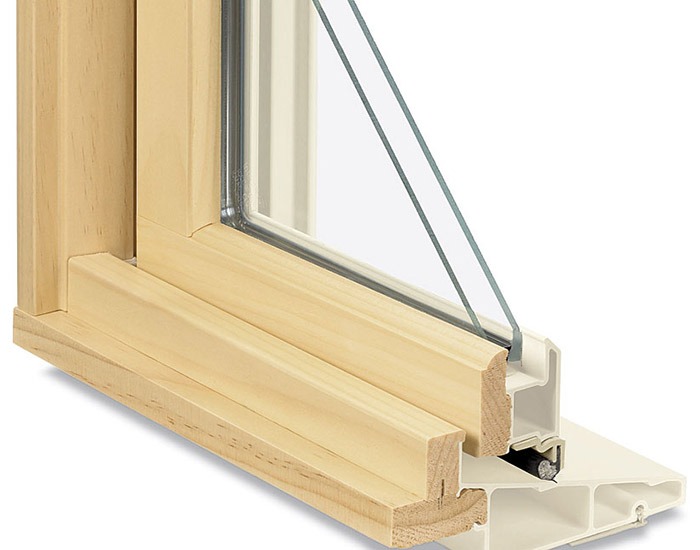 One of the main ways your windows can be more energy-efficient is directly related to the number of glass panes they have. Most traditional windows have one glass pane. Windows created to boost energy-efficiency may have two or even three panes with a special type of insulating gas trapped between each pane. This added insulation decreases energy consumption by almost completely eliminating the escape of conditioned air from your building and by protecting your home’s conditioned air from the outside temperatures.
One of the main ways your windows can be more energy-efficient is directly related to the number of glass panes they have. Most traditional windows have one glass pane. Windows created to boost energy-efficiency may have two or even three panes with a special type of insulating gas trapped between each pane. This added insulation decreases energy consumption by almost completely eliminating the escape of conditioned air from your building and by protecting your home’s conditioned air from the outside temperatures.
U-Values
There are many other ways to make windows more energy-efficient, but the best and simplest way to judge the energy-efficiency of a window is to understand the U-Value.
The U-factor of a window tells you what rate heat flows through the window and frame to give you a measure of its energy-efficiency. Higher U-Values signify worse insulation and lower U-Values signify better insulation properties.
Low-E
Low-E (Low-emissivity) glass has a coating on it that allows light through but blocks heat. A Low-E coating can help keep your home cool on a hot day and interior heat from escaping on a cold day. Low-E glass also reduces ultraviolet (UV) light entering the home which helps furniture from fading.
Energy Star
 Another good way to judge the energy savings of new windows is to check if it comes with an ENERGY STAR certification. This rating signifies that the Department of Energy and the Environmental Protection Agency have certified that the window meets certain energy performance criteria.
Another good way to judge the energy savings of new windows is to check if it comes with an ENERGY STAR certification. This rating signifies that the Department of Energy and the Environmental Protection Agency have certified that the window meets certain energy performance criteria.
If you want to find replacement windows that are right for your project, please visit our replacement window page to request a free estimate!
